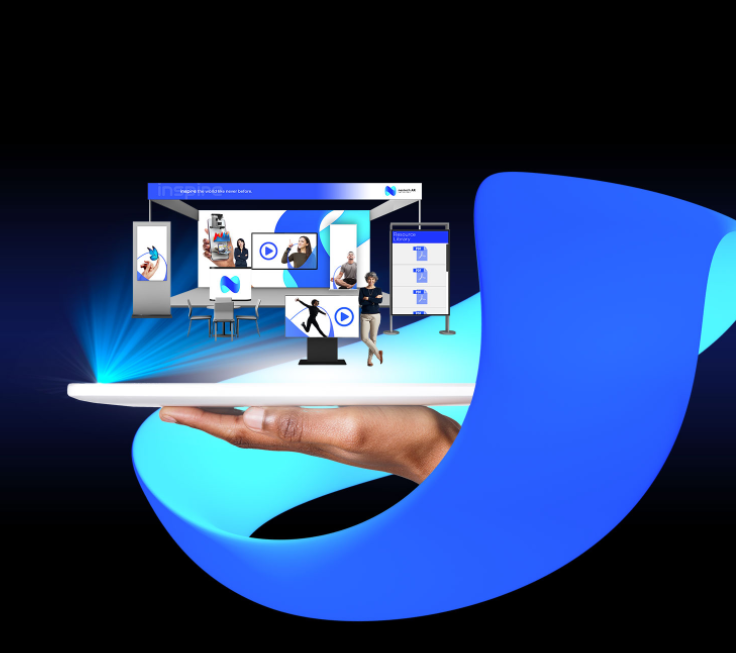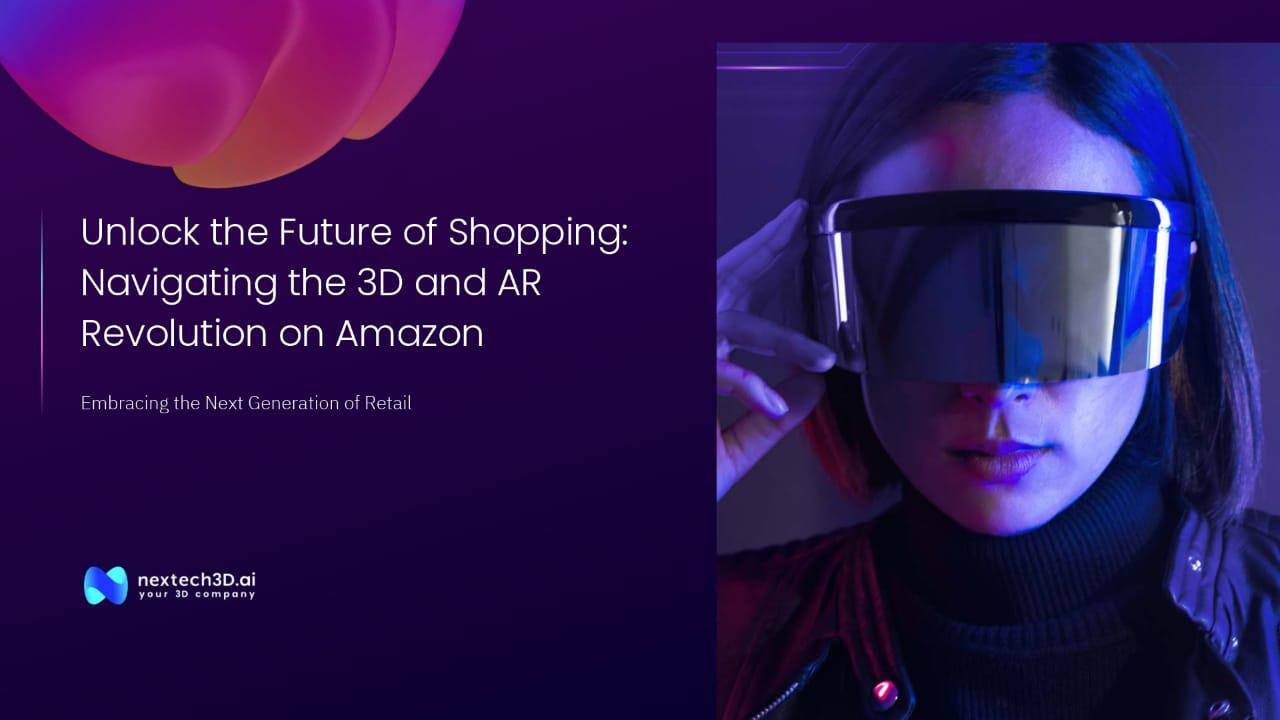The proliferation, creation, and adoption of 3D content has surged across industries.
Businesses are using 3D graphics and models to elevate marketing strategies, product designs, and more.
Despite its popularity, 3D content management remains a significant challenge for many brands.
They have a tough time collaborating with internal teams and sharing 3D content across functional teams.
As the use of 3D content expands in fields ranging from gaming and film to architecture and education, professionals face increasing complexities in its management.
While 3D content offers unmatched engagement and realism, effectively addressing these challenges is crucial for sustained business success.

Key Challenges
Complexity Of 3D Data:
Unlike 2D images or text files, 3D models are intricate creations that involve geometry, textures, lighting, and animations.
Managing this complexity requires specialized software and knowledge, which can create a barrier for many businesses.
Storage And Bandwidth Requirements:
3D models, particularly those with high resolution or intricate details, can be large in file size.
Storing these files demands considerable digital storage capacity, and sharing them requires substantial bandwidth, which can be fairly costly and lead to slower workflows.
Collaboration And Version Control:
When multiple team members collaborate on a 3D model, it can be difficult to keep track of the changes and ensure everyone is working with the most up-to-date version.
Without effective version control, there's a risk of data loss or inconsistent results.
Compatibility Issues:
Different software tools and platforms use various file formats for 3D models. Ensuring that your 3D content is compatible across different platforms can be a significant hurdle.
This especially when you’re collaborating with external partners.
Rendering And Performance Optimization:
Rendering high-quality 3D content requires substantial computing power and ensuring that this content performs well across different devices and platforms is another challenge.
Optimizing models for performance without sacrificing quality is a delicate balance.
Security Concerns:
As with any digital asset, 3D content is vulnerable to unauthorized access, theft, and piracy.
Ensuring the security of these assets, especially when they are shared across teams or published online, is a growing concern.
Cost Management:
The cost of managing 3D content, from storage to the software and hardware required for rendering, can quickly add up.
For businesses looking to scale their use of 3D content, these costs can become prohibitive.
The Benefits Of Effective 3D Content Management
In today’s digital landscape, the effective management of 3D content is pivotal for industries such as gaming, entertainment, architecture, and manufacturing.
As the demand for immersive experiences grows, organizations are increasingly recognizing the importance of streamlined 3D content workflows.
Here are the key benefits of managing 3D content effectively:
Enhanced Collaboration:
Efficient management enables smooth collaboration among team members, allowing designers, developers, and stakeholders to work together in real-time.
With centralized platforms, teams can easily share updates, provide feedback, and make quick adjustments, minimizing the risk of miscommunication and errors.
Increased Efficiency:
Structured management practices streamline the workflow for creating and handling 3D assets.
By implementing version control and asset tracking, teams can reduce redundancies and optimize processes, resulting in significant time savings and a boost in overall productivity.
Quality Assurance:
Managing 3D content with clear standards ensures consistency and quality across all projects.
Regular audits, automated checks, and a systematic approach to asset management help maintain high standards, leading to a more refined final product.
Scalability:
As projects grow and demands increase, a strong management system supports scalability.
Organizations can effectively adapt to larger teams and more complex projects without sacrificing quality or deadlines, making it easier to meet expanding market demands.
Resource Optimization:
A well-executed management strategy ensures that resources are used efficiently, with tools, assets, and talent deployed where they are most needed.
This results in cost savings and better allocation of budgets and personnel.
Toggle3D.ai and ARitize 3D: A Game-Changer For 3D Content Management
Effective 3D content management is not just a technical necessity but a strategic advantage in today’s competitive landscape, driving innovation and success.
By adopting robust management practices and leveraging tools like Toggle3D.ai and ARitize3D, organizations can simplify and optimize their 3D content workflows.
This positions them at the forefront of their industries, ready to fully harness the potential of 3D technology.
Toggle3D.ai: Simplifying 3D Asset Management
Toggle3D.ai offers a robust solution for businesses looking to streamline their 3D content workflow.
By leveraging advanced machine learning algorithms, it automates the creation and optimization of 3D models.
This not only reduces the time spent on 3D asset preparation.
It also produces high-quality outputs that are suited for various applications—whether for e-commerce platforms, marketing materials, or virtual environments.
The platform's intuitive interface allows users to easily upload and convert 3D models, making it accessible for teams with varying levels of technical expertise.
Additionally, Toggle3D.ai supports multiple file formats and offers integration capabilities with popular design tools, enhancing collaboration within organizations.
Visit Toggle3D.ai to learn more.
Unlock the full potential of your 3D designs with Toggle3D.ai Platform!
ARitize 3D: Enhancing Interactive Experiences
Complementing Toggle3D.ai, ARitize 3D focuses on enhancing interactivity and user experience.
This platform enables businesses to display their 3D content in augmented reality, creating immersive experiences that captivate consumers and drive engagement.
With ARitize 3D, users can easily convert 3D models into augmented reality experiences, allowing customers to visualize products in real-world settings before making a purchase.
Moreover, ARitize 3D’s seamless integration with websites and mobile applications ensures that businesses can implement AR capabilities without cumbersome technical hurdles.
This ability to transform static content into dynamic experiences provides a competitive edge in an increasingly visual market.
Discover how Nextech3D.ai can elevate your creations.
Explore the power of the ARitize 3D Platform for next-level 3D designs.
Leveraging the combined strengths of Toggle3D.ai and ARitize 3D provides businesses with a powerful toolkit for managing and optimizing 3D content.
These platforms automate key workflows, enhance efficiency, and enable interactive experiences that deepen audience engagement.
As demand for high-quality 3D content grows, adopting these technologies is essential for staying competitive, improving digital experiences, and driving increased sales.








